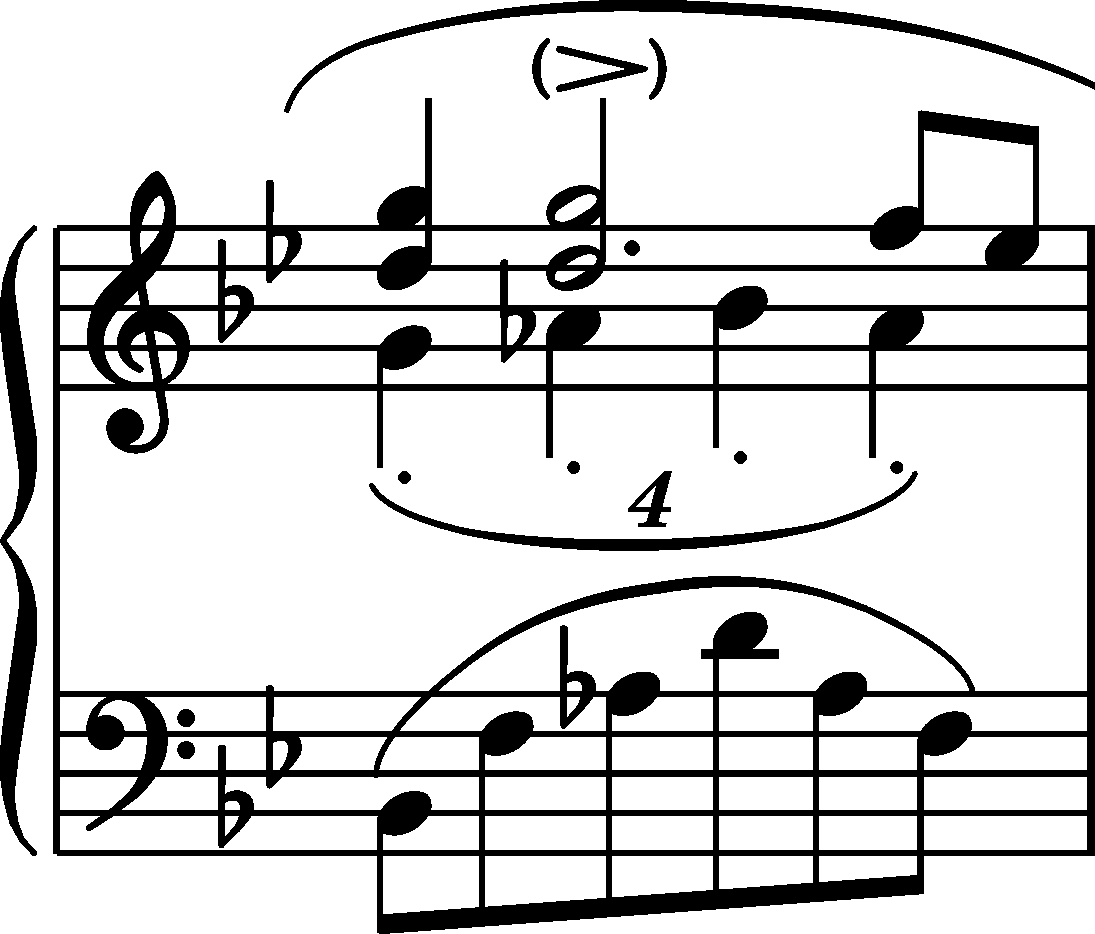



Issues : GE revisions
|
b. 179
|
composition: Op. 23, Ballade in G minor
..
The individual voices of the polymetric R.H. figure are not strictly placed in any of the sources, regardless of whether with respect to each other or whether with respect to the L.H. quavers. According to us, as far as the mutual relations between the R.H. voices are concerned, the only imprecision in the notation of A (→FE), i.e. all voices falling on the a category imprint: Interpretations within context; Differences between sources issues: EE revisions , GE revisions , Inaccuracies in A |
||||||||
|
b. 179
|
composition: Op. 23, Ballade in G minor
..
It is uncertain how the removal of category imprint: Differences between sources issues: Errors in GE , GE revisions |
||||||||
|
b. 180
|
composition: Op. 23, Ballade in G minor
..
GE3 (→GE4) added a digit 3 over the first quaver, as if it constituted a part of the triplet with the next one, as in all subsequent, similar motifs. However, a respective rest is missing; moreover, the notes were not moved with respect to the L.H. part, which points to an unfinished change (intended and arbitrary) or to a mistake of the reviser (which seems more likely). category imprint: Differences between sources issues: Errors in GE , GE revisions |
||||||||
|
b. 191
|
composition: Op. 23, Ballade in G minor
..
Chopin must have added ritenuto while proofreading FE (→GE,EE). GE used an abbreviation, i.e. riten. category imprint: Differences between sources issues: GE revisions , Authentic corrections of FE |
||||||||
|
b. 193
|
composition: Op. 23, Ballade in G minor
..
The change of authentic e category imprint: Differences between sources issues: GE revisions |

 1-d1-g2 chord, is intentional and directly indicates the performance manner intended by Chopin. In turn, the attempts of
1-d1-g2 chord, is intentional and directly indicates the performance manner intended by Chopin. In turn, the attempts of  . In the Chopinesque version, the gap between the last a
. In the Chopinesque version, the gap between the last a in
in